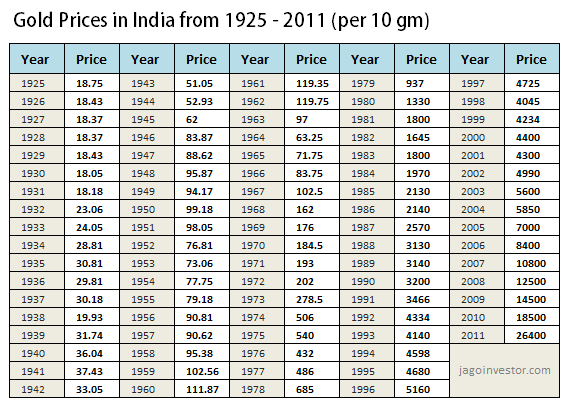Data Assumption: Homoscedasticity Bivariate Tests
Contents
The subsequent code chunks demonstrate how to import the data into R and how to produce a plot in the fashion of Figure 5.3 in the book.
The method can be applied with the R function khomreg described in the next section. Verify that if the goal is to have confidence intervals with FWE equal to .05 and lengths .5, the required sample sizes for each group are 50, 11, 18, and 17. So for a null hypothesis test, assuming equal variances should be OK. After all, the basis for a null hypothesis test is the null distribution.

In a z-distribution, z-scores tell you how many standard deviations away from the mean each value lies. The study of homescedasticity and heteroscedasticity has been generalized to the multivariate case, which deals with the covariances of vector observations instead of the variance of scalar observations. One version of this is to use covariance matrices as the multivariate measure of dispersion.
HCSE is a consistent estimator of standard errors in regression models with heteroscedasticity. This method corrects for heteroscedasticity without altering the values of the coefficients. Several modifications of the White method of computing heteroscedasticity-consistent standard errors have been proposed as corrections with superior finite sample properties.
Homoscedasticity in Regression Analysis
The t-score is the test statistic used in t-tests and regression tests. It can also be used to describe how far from the mean an observation is when the data follow a t-distribution. A t-score (a.k.a. a t-value) is equivalent to the number of standard deviations away from the mean of the t-distribution. While interval and ratio data can both be categorized, ranked, and have equal spacing between adjacent values, only ratio scales have a true zero.
The errors are the deviations of observed data from the expected values, $y_i – [y_i|x_i]$, whereas the residuals are the differences between the observed values and the model’s predicted values, $y_i – \hat y_i$. Importantly, $\hat y_i$ only necessarily equals $[y_i|x_i]$ ‘at’ infinity , in the short run, they are almost certainly different. Thus, the residuals you have are not identical to the true errors. Moreover, the assumption of homoscedasticity pertains to the errors, not the residuals.
Both chi-square tests and t tests can test for differences between two groups. However, a t test is used when you have a dependent quantitative variable and an independent categorical variable . A chi-square test of independence is used when you have two categorical variables. Both correlations and chi-square tests can test for relationships between two variables.

In many instances, it is appropriate to assume that the error variance between subjects or between studies is the same (i.e. Now, we can evaluate our model either graphically or statistically. The probability that a student knows the correct answer to a question on a multiple choice exam… Which of the following statements stated below is precisely correct? Summation is used to express the sum of all numbers or the sum of a subset of numbers. Summation can be used for both addition and subtraction of numeric numbers.
The test statistic tells you how different two or more groups are from the overall population mean, or how different a linear slope is from the slope predicted by a null hypothesis. Different test statistics are used in different statistical tests. The only difference between one-way and two-way ANOVA is the number of independent variables. A one-way ANOVA has one independent variable, while a two-way ANOVA has two.
Assumptions of Simple Linear Regression: What will be the effect of the error terms not being homoscedastic in nature?
A classic example of heteroscedasticity is that of income versus expenditure on meals. As one’s income increases, the variability of food consumption will increase. A poorer person will spend a rather constant amount by always eating inexpensive food; a wealthier person may occasionally buy inexpensive food and at other times eat expensive meals. Those with higher incomes display a greater variability of food consumption. With a few exceptions, space considerations preclude the presentation of examples in this article.
- To reduce the risk of a Type II error, you can increase the sample size or the significance level to increase statistical power.
- A simple regression model, or equation, consists of four terms.
- Standard error and standard deviation are both measures of variability.
- Cohen’s d measures the size of the difference between two groups while Pearson’s r measures the strength of the relationship between two variables.
- The more standard deviations away from the predicted mean your estimate is, the less likely it is that the estimate could have occurred under the null hypothesis.
This is accomplished by separating a dataset into two portions or groups, which is why the test is also known as a two-group test. Lot of Heteroscedasticity data is available in different text book. Google it such as heteroscedasticd data, econometric data, etc. The Scribbr Plagiarism Checker is powered by elements of Turnitin’s Similarity Checker, namely the plagiarism detection software and the Internet Archive and Premium Scholarly Publications content databases.
Power is the extent to which a test can correctly detect a real effect when there is one. Outliers can have a big impact on your statistical analyses and skew the results of any hypothesis test if they are inaccurate. Other outliers are problematic and should be removed because they represent measurement errors, data entry or processing errors, or poor sampling. Outliers are extreme values that differ from most values in the dataset.
Statistics
A t-test should not be used to measure differences among more than two groups, because the error structure for a t-test will underestimate the actual error when many groups are being compared. If the F statistic is higher than the critical value (the value of F that corresponds with your alpha value, usually 0.05), then the difference among groups is deemed statistically significant. Lower AIC values indicate a better-fit model, and a model with a delta-AIC of more than -2 is considered significantly better than the model it is being compared to. The Akaike information criterion is calculated from the maximum log-likelihood of the model and the number of parameters used to reach that likelihood.

These are the upper and lower bounds of the confidence interval. The confidence level is the percentage of times you expect to get close to the same estimate if you run your experiment again or resample the population in the same way. The z-score and t-score (aka z-value and t-value) show how many standard deviations away from the mean of the distribution you are, assuming your data follow a z-distribution or a t-distribution. Find a distribution that matches the shape of your data and use that distribution to calculate the confidence interval.
Example of Homoskedastic
If there is heteroscedasticity, one of the essential assumptions of linear regression is that the residuals are evenly distributed at each level of the response variable. The line of best fit is an output of regression analysis that represents the relationship between two or more variables in a data set. The Akaike information criterion is a mathematical test used to evaluate how well a model fits the data it is meant to describe. https://1investing.in/ It penalizes models which use more independent variables as a way to avoid over-fitting. Generally, the test statistic is calculated as the pattern in your data (i.e. the correlation between variables or difference between groups) divided by the variance in the data (i.e. the standard deviation). These scores are used in statistical tests to show how far from the mean of the predicted distribution your statistical estimate is.
What Is Homoskedastic?
They can also be estimated using p-value tables for the relevant test statistic. The alpha value, or the threshold for statistical significance, is arbitrary – which value you use depends on your field of study. The measures of central tendency you can use depends on the level of measurement of your data. The mean is the most frequently used measure of central tendency because it uses all values in the data set to give you an average.
Then you can plug these components into the confidence interval formula that corresponds to your data. The formula depends on the type of estimate (e.g. a mean or a proportion) and on the distribution of your data. The standard normal distribution, also called the z-distribution, is a special normal distribution where the mean is 0 and the standard deviation is 1. The t-distribution gives more probability to observations in the tails of the distribution than the standard normal distribution (a.k.a. the z-distribution).
To find the slope of the line, you’ll need to perform a regression analysis. These extreme values can impact your statistical power as well, making it hard to detect a true effect if there is one. Some outliers represent natural variations the error term is said to be homoscedastic if in the population, and they should be left as is in your dataset. Even though the geometric mean is a less common measure of central tendency, it’s more accurate than the arithmetic mean for percentage change and positively skewed data.
registre-se na binance
1 de fevereiro de 2025 at 06:15
Thank you for your sharing. I am worried that I lack creative ideas. It is your article that makes me full of hope. Thank you. But, I have a question, can you help me?